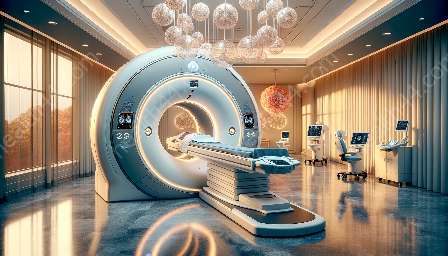Mammography machines play a vital role in modern healthcare. These innovative medical devices are essential for early detection and diagnosis of breast cancer, a leading cause of mortality among women worldwide. In this comprehensive guide, we will delve into the world of mammography machines, exploring their technology, benefits, and significance within the broader landscape of medical imaging devices and equipment.
The Role of Mammography Machines in Medical Imaging
Mammography machines are specialized devices designed to capture high-resolution images of the breasts. They utilize low-dose X-rays to create detailed images, allowing radiologists and healthcare professionals to detect abnormalities such as tumors, cysts, or calcifications.
Within the realm of medical imaging devices, mammography machines are specifically tailored to address the unique challenges posed by breast imaging. Their ability to provide clear and accurate images is crucial for early detection and diagnosis of breast cancer, as well as for monitoring the effectiveness of treatments.
Advanced Technology in Mammography Machines
Modern mammography machines have evolved significantly, incorporating advanced technologies to enhance their imaging capabilities and patient comfort. Digital mammography, for instance, has replaced traditional film-based techniques, offering superior image quality and faster processing times. Furthermore, 3D mammography, also known as digital breast tomosynthesis, provides detailed three-dimensional images, improving the detection of abnormalities and reducing the need for additional follow-up tests.
Moreover, the integration of computer-aided detection (CAD) software in mammography machines has augmented the diagnostic process. CAD algorithms assist radiologists in identifying suspicious areas on mammograms, thus improving the accuracy of examinations and reducing the risk of missed diagnoses.
Benefits of Mammography Machines
The benefits of mammography machines extend beyond their ability to detect breast cancer at early stages. These devices enable healthcare providers to perform non-invasive and relatively quick examinations, making them accessible to a wide range of patients. Additionally, the use of low-dose X-rays minimizes radiation exposure while still yielding high-quality images, ensuring the safety of patients undergoing mammograms.
Furthermore, mammography machines facilitate the implementation of breast cancer screening programs, contributing to the early detection of abnormalities and ultimately saving lives. By detecting breast cancer in its early stages, healthcare professionals can provide timely interventions, leading to improved treatment outcomes and reduced mortality rates.
Evolution of Mammography Machines
The advancement of mammography machines reflects the ongoing progress within the field of medical devices and equipment. As technology continues to evolve, so do the capabilities of these devices. Innovations such as contrast-enhanced mammography, which utilizes contrast agents to enhance the visibility of tumors, and automated breast ultrasound systems, which complement mammography in certain cases, are expanding the toolkit available to healthcare providers.
Additionally, efforts to improve the ergonomics and patient experience during mammography procedures have led to the development of specialized compression paddles and adjustable imaging systems, aiming to enhance both the accuracy of imaging and the comfort of patients.
Significance of Mammography Machines in Healthcare
Within the broader landscape of medical devices and equipment, mammography machines occupy a critical position in the realm of preventive healthcare. Their ability to provide early and accurate detection of breast cancer not only contributes to individual patient care but also supports public health initiatives aimed at reducing the burden of this prevalent disease.
Moreover, the integration of mammography machines into comprehensive medical imaging facilities underscores the interconnectedness of various diagnostic tools and treatment modalities. By working in conjunction with other medical imaging devices, such as MRI and ultrasound machines, mammography machines contribute to a multi-faceted approach to healthcare, allowing for comprehensive assessment and management of breast health.
Conclusion
Mammography machines represent a cornerstone of modern medical imaging devices and equipment, playing a pivotal role in the early detection and diagnosis of breast cancer. Their technological advancements, coupled with the benefits they offer in terms of patient care and public health, underscore their significance within the broader landscape of healthcare. As these machines continue to evolve and improve, they stand as a testament to the ongoing commitment to advancing medical technology for the betterment of patient outcomes and overall well-being.


